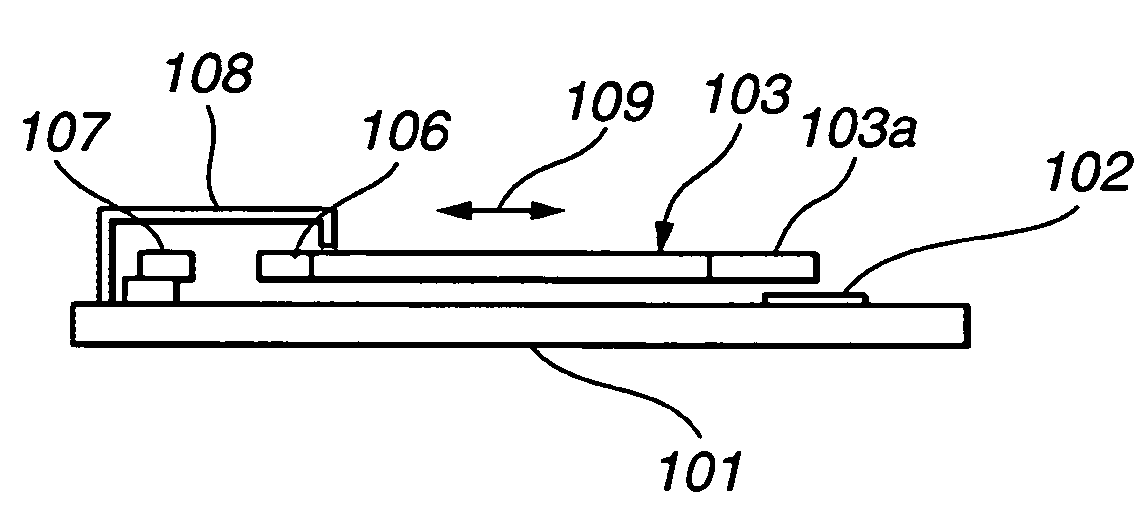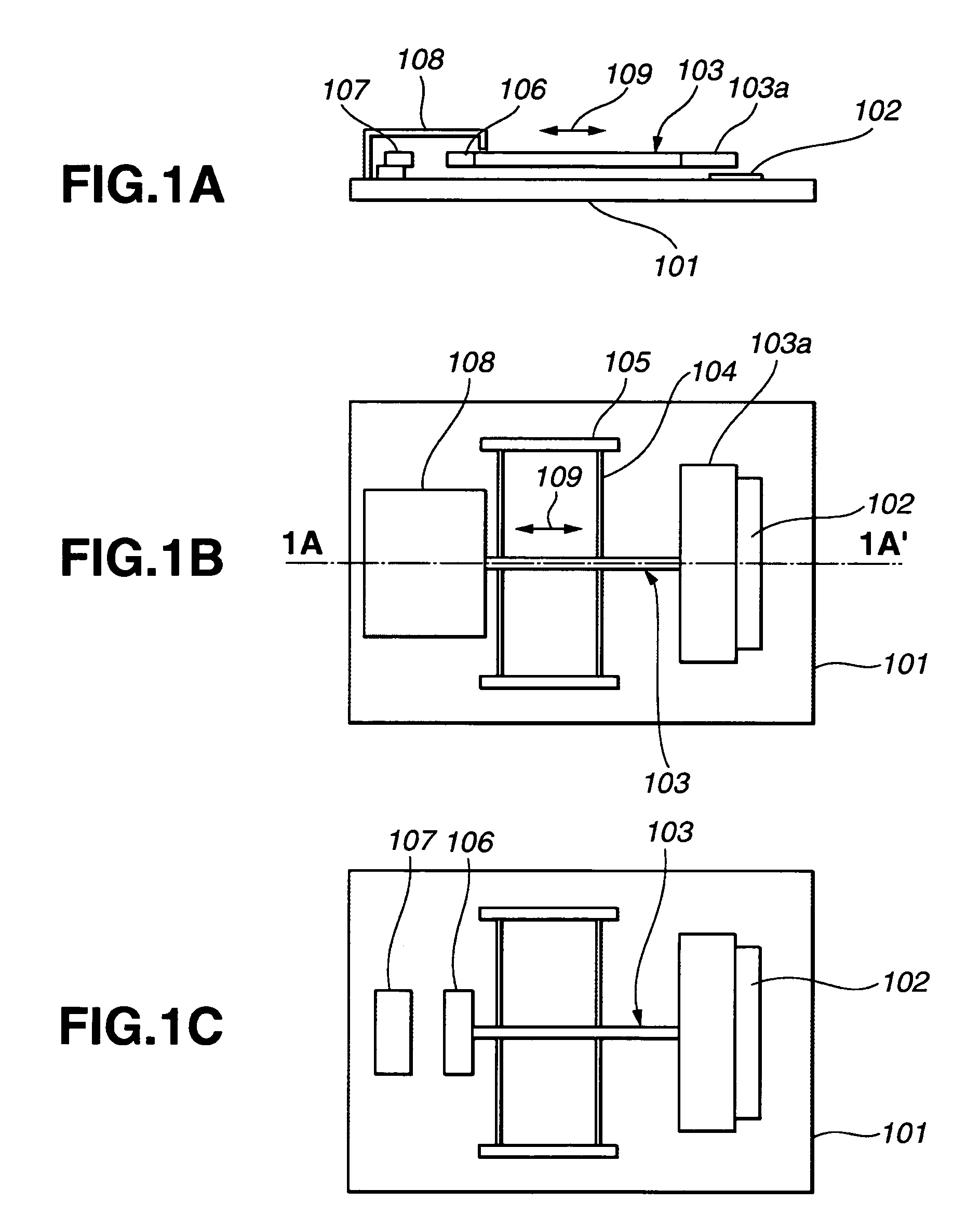Electric potential sensor
a technology of electric potential and output signal, which is applied in the direction of electrostatic field measurement, instruments, electrographic process apparatus, etc., can solve the problems of driving noise, affecting the accuracy of sensing, driving noise, etc., and achieve the effect of preventing or reducing the unfavorable mixing of driving noise and output signal of the detecting electrod
- Summary
- Abstract
- Description
- Claims
- Application Information
AI Technical Summary
Benefits of technology
Problems solved by technology
Method used
Image
Examples
first embodiment
[0032]A first embodiment directed to an electric potential sensor will be described with reference to FIGS. 1A to 1C. As illustrated in FIGS. 1A to 1C, the electric potential sensor of this embodiment includes a substrate 101, a detecting electrode 102 formed on the substrate 101, a shutter member 103, elastic beams 104, a pair of anchor members 105, a stationary electrode 107, and an electric shield 108. The shutter member 103 includes a movable electrode 106 formed at its one end and a shutter portion 103a formed at its other end. The shutter member 103 moves in such a reciprocal manner that the shutter portion 103a can variably cover the detecting electrode 102 to periodically change the electric field that reaches the detecting electrode 102 from a measurement object (not shown).
[0033]Each elastic beam 104 is connected to an intermediate portion of the shutter member 103 to permit the reciprocating motion of the shutter member 103. Each anchor member 105 is connected to outermos...
sixth embodiment
[0066]In the structure of the above-discussed sixth embodiment, upon swinging rotation of the swingingly-rotatable member 1101, distances between the two detecting electrodes 1102 and a measurement object (not shown) change in a mutually-opposite phase. Accordingly, coupling capacitances between the two detecting electrodes 1102 and the measurement object periodically change in a mutually-opposite phase. An electric potential of the measurement object can be measured by processing output signals from the two detecting electrodes 1102 in a differential manner in the signal processing circuit. The number of detecting electrodes is not necessarily limited to two. Function of a potential sensor can be likewise achieved when only one detecting electrode is used.
[0067]In the structure of FIG. 9A, however, lines of electric force from an electrostatic force generation portion 1300 reach a region 1200 of the detecting electrode 1102, generating driving noise. In the sixth embodiment, theref...
seventh embodiment
[0069]Description will now be given for an image forming apparatus of a seventh embodiment using an electric potential sensor of the present invention, with reference to FIG. 10. In FIG. 10, reference numeral 801 designates an electric potential sensor of the present invention. Reference numeral 802 designates an electrostatic charging device. Reference numeral 803 designates a signal processing device. Reference numeral 804 designates a high-voltage generating device. Reference numeral 805 designates a light exposing device. Reference numeral 806 designates a toner supplying device. Reference numeral 807 designates a transferring material conveying roller. Reference numeral 808 designates a photosensitive drum. Reference numeral 809 designates a transferring material sandwiched between the transferring material conveying roller 807 and the photosensitive drum 808.
[0070]An electric potential distribution on the photosensitive drum 808 can be measured when an output of the potential ...
PUM
 Login to View More
Login to View More Abstract
Description
Claims
Application Information
 Login to View More
Login to View More - R&D
- Intellectual Property
- Life Sciences
- Materials
- Tech Scout
- Unparalleled Data Quality
- Higher Quality Content
- 60% Fewer Hallucinations
Browse by: Latest US Patents, China's latest patents, Technical Efficacy Thesaurus, Application Domain, Technology Topic, Popular Technical Reports.
© 2025 PatSnap. All rights reserved.Legal|Privacy policy|Modern Slavery Act Transparency Statement|Sitemap|About US| Contact US: help@patsnap.com



